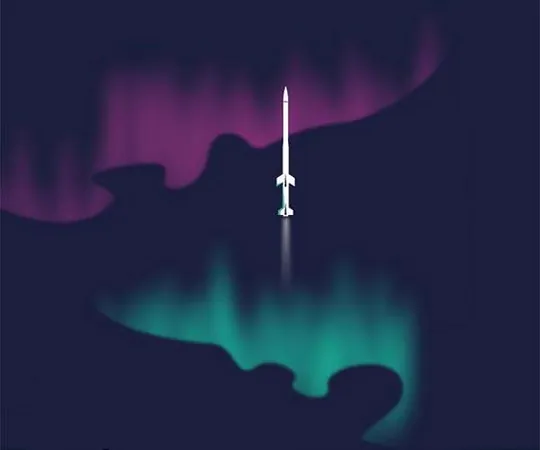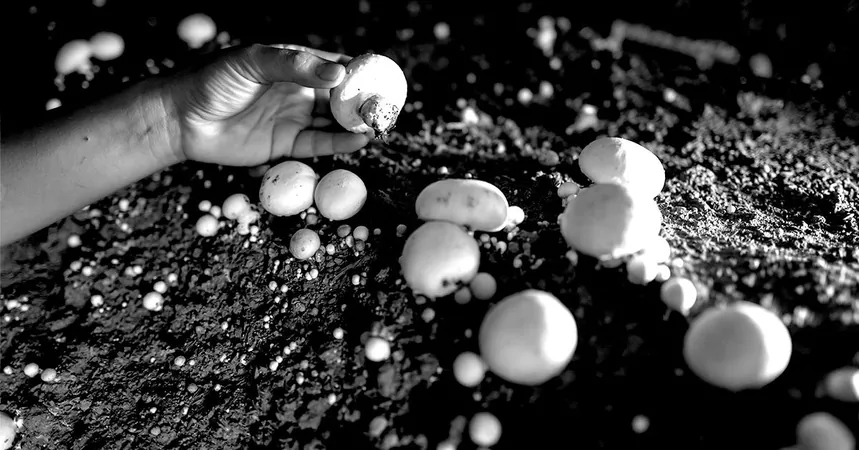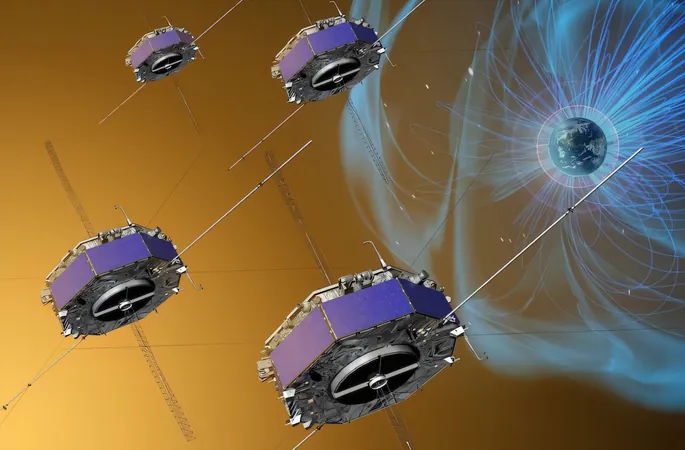
Groundbreaking Space Experiments Launched from Sweden Seize Microgravity Opportunities!
2024-11-27
Author: Siti
A Pivotal Day in Space Exploration.
A pivotal day in space exploration unfolded on November 26, 2024, as six innovative science experiments embarked on a journey aboard the SubOrbital Express-4 rocket, launched from the famous Esrange Space Center in northern Sweden. This mission saw a collaboration of scientific expertise from six countries joining forces to explore the uncharted territories of microgravity, a realm that could revolutionize our understanding of various fields such as medicine, renewable energy, and the fundamental aspects of the universe.
Spectacular Ascent and Mission Details.
In a spectacular ascent that reached an impressive altitude of 256 kilometers, the SubOrbital Express-4 achieved six breathtaking minutes of microgravity. Following a two-year development period filled with anticipation and meticulous planning, researchers from the United States, Japan, Germany, the Netherlands, Finland, and Sweden watched their experiments as they soared into the pristine Arctic sky, ripe with potential for groundbreaking findings.
High-Value Payload and Significance.
Among the high-value payload, which has since been recovered by helicopter, were experiments designed to advance our comprehension of the immune system, develop innovative solar technologies for sustainable energy, and study the intriguing behavior of cosmic dust particles. Charlotta Sund, CEO of SSC (Swedish Space Corporation), commented on the significance of this mission, stating, “Our SubOrbital Express program is key in providing scientists and commercial stakeholders with invaluable access to microgravity environments, paving the way for remarkable scientific advancements.”
European Space Agency's Involvement.
The European Space Agency's Director of Human and Robotic Exploration, Daniel Neuenschwander, expressed equal enthusiasm for the mission. "With ESA backing three of the onboard experiments—spanning both biological and physical sciences—we're really excited about the immense potential of Esrange as a test range for future exploratory activities."
The Six Experiments.
The six experiments on this ambitious mission included:
1. MicACTin.
A deep dive into understanding how microgravity affects the human immune system, with implications for health in space.
2. LiFiCo.
Focused on pioneering advanced solar cell technologies that could lead to more sustainable energy solutions.
3. DUST-II.
Investigating the formation mechanisms and growth processes of cosmic dust grains that are essential to our understanding of planetary formation.
4. JACKS.
A unique study of how granular materials behave in microgravity, offering insights applicable to both scientific and industrial processes.
5. BFS.
Examining the altered gravity effects on biological processes in bladderwrack, a type of seaweed, which could yield knowledge about space agriculture.
6. TATTS.
Utilizing video analysis to explore the intriguing behaviors of water in a microgravity environment, potentially influencing future spacecraft designs.
Conclusion.
As the world watches with keen interest, these experiments represent not only scientific exploration but also a promise of future technologies that could benefit humanity. The results from this mission could be just the beginning of a new era in space research. Stay tuned for more groundbreaking updates from the final frontier!



 Brasil (PT)
Brasil (PT)
 Canada (EN)
Canada (EN)
 Chile (ES)
Chile (ES)
 España (ES)
España (ES)
 France (FR)
France (FR)
 Hong Kong (EN)
Hong Kong (EN)
 Italia (IT)
Italia (IT)
 日本 (JA)
日本 (JA)
 Magyarország (HU)
Magyarország (HU)
 Norge (NO)
Norge (NO)
 Polska (PL)
Polska (PL)
 Schweiz (DE)
Schweiz (DE)
 Singapore (EN)
Singapore (EN)
 Sverige (SV)
Sverige (SV)
 Suomi (FI)
Suomi (FI)
 Türkiye (TR)
Türkiye (TR)